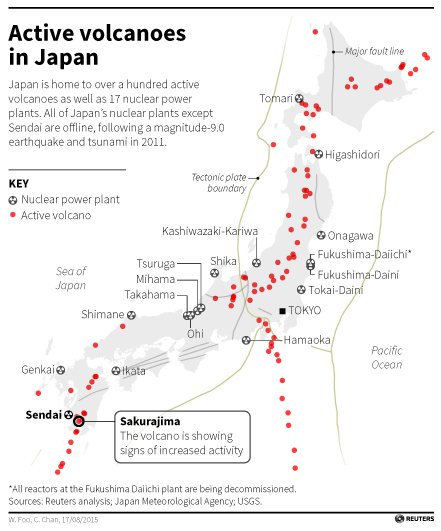Why in the News?
Japan’s Sakurajima volcano has erupted several times sending ash plumes up to 4.4 km into the atmosphere.

About Sakurajima Volcano:
- Location: Kagoshima Prefecture, Kyushu, sitting on the southern rim of the Aira caldera inside Kagoshima Bay.
- Geological Origin: Linked to formation of the Aira caldera (22,000–29,000 years ago); Sakurajima developed as a post-caldera cone about 13,000 years ago.
- Volcano Type: A classic stratovolcano built from alternating lava and ash layers; active vents include Minamidake crater and the Showa flank crater.
- Physical Features: Height 1,117 m, circumference ≈50 km; originally an island until 1914 lava flows connected it to the Osumi Peninsula.
- Eruption Style: Dominantly Strombolian eruptions (ash, bombs, lapilli) but historically capable of large Plinian eruptions.
- Historical Activity: Continuous eruptive record since 963 AD; major episodes in 1471–76, 1779–82, and the 1914 catastrophic eruption.
- Risk Status: Considered one of Japan’s most dangerous volcanoes due to high activity, caldera-linked magma supply and extreme proximity to inhabited zones.
What makes it unique?
- Near-Continuous Activity: Erupts hundreds of times annually, ranking among the world’s most persistently active volcanoes.
- Caldera System: Built on the Aira caldera, giving it a deep, complex, highly active magma plumbing network.
- Landform Transformation: The 1914 eruption converted Sakurajima from an island into a peninsula, an unusual event in recorded volcanology.
| [UPSC 2005] Where is the volcanic mountain, Mount St- Helens located?
Options: (a) Chile (b) Japan (c) Philippines (d) United States of America* |
Get an IAS/IPS ranker as your 1: 1 personal mentor for UPSC 2024

